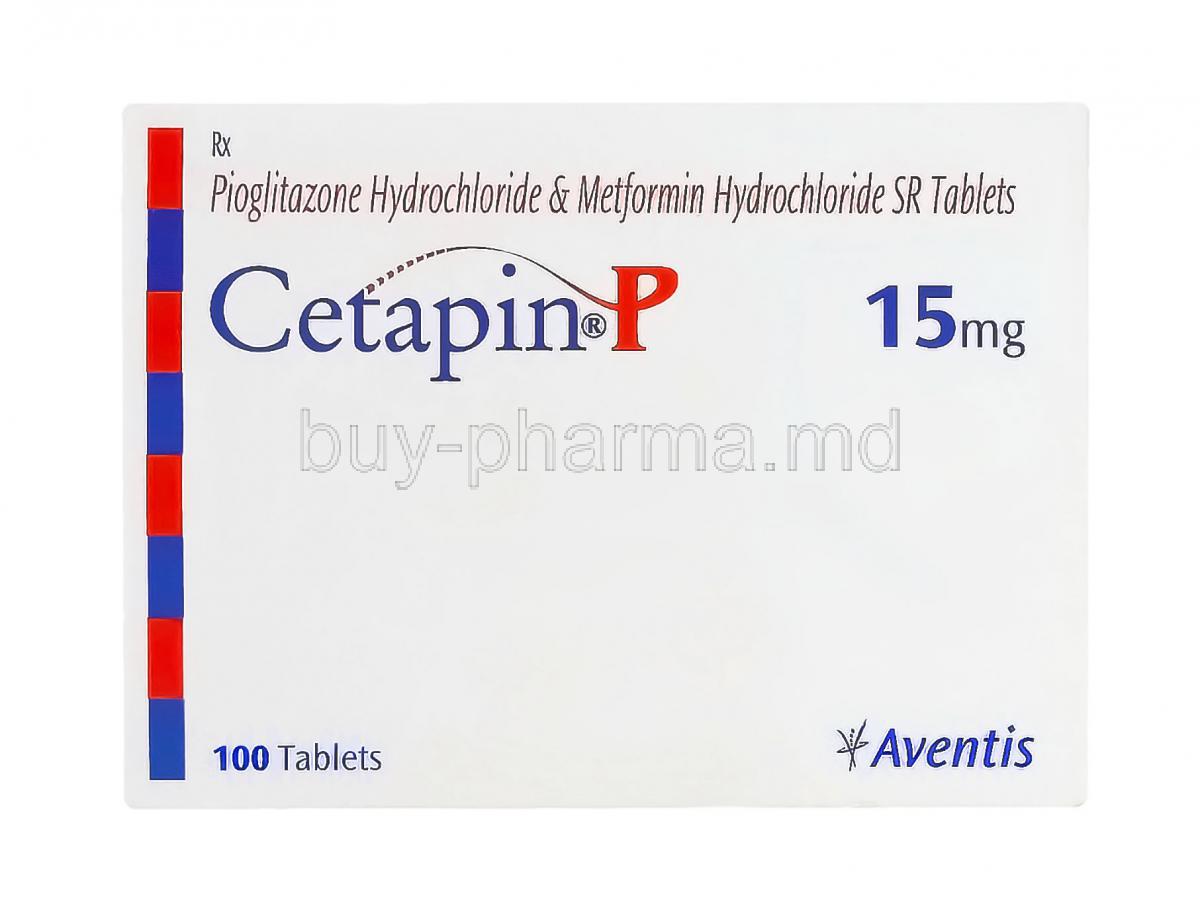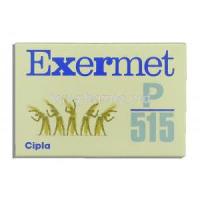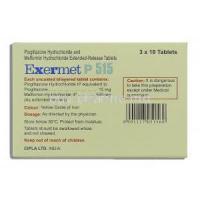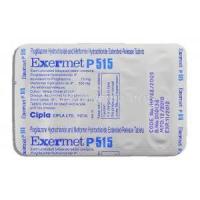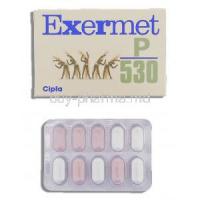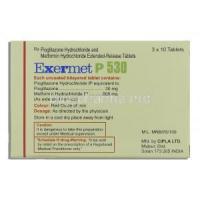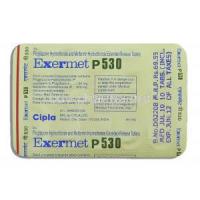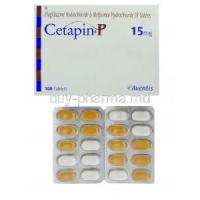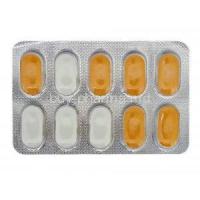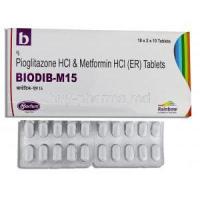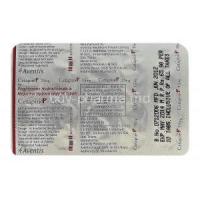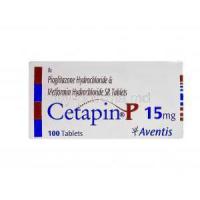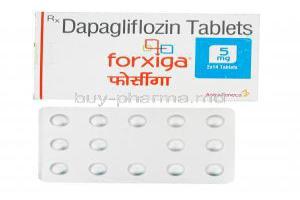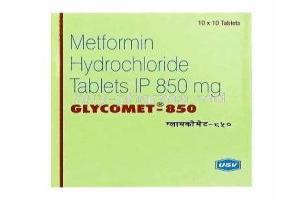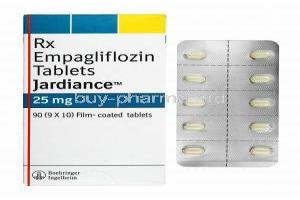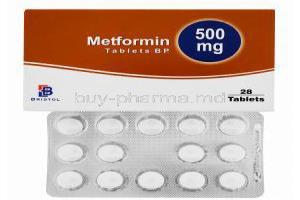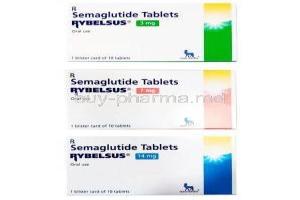Pioglitazone/ Metformin
- Introduction
- Composition
- Uses
- Off-Label Use
- How It Works
- Dosage and Administration
- Administration to Elderly
- Administration to Pregnant Women and Nursing Mothers
- Administration to Children
- Common Side Effects
- Serious Side Effects and Warnings
- Important Precautions
- Interaction
- Contraindication
- Careful Administration
- Storage
- Overdosage
- Handling Precautions
Introduction
The combination of Pioglitazone and Metformin has become an element in the treatment of Type 2 Diabetes Mellitus (T2DM). This two-in-one solution combines the effects of Pioglitazone, a thiazolidinedione, and Metformin, a biguanide, to provide a holistic approach to controlling high blood sugar levels. By tackling both insulin resistance and reduced insulin production, this treatment has greatly improved the outlook for people dealing with T2DM.
Composition
The combination of Pioglitazone and Metformin in one medication brings together the complementary functions of these two active components. Pioglitazone helps improve the body's response to insulin, reducing insulin resistance, while Metformin works to reduce glucose production in the liver, which is crucial in managing Type 2 Diabetes. This medicine comes in forms to meet the varied requirements and choices of patients.

Uses
Pioglitazone/Metformin Combination for Type 2 Diabetes:
- The combination of pioglitazone and metformin is primarily recommended for treating Type 2 Diabetes in individuals who have not achieved desired blood sugar levels through diet, exercise, or other antidiabetic medications alone.
- Clinical studies have demonstrated the effectiveness of this combination in controlling blood sugar more effectively than using either agent alone.
Off-Label Use
- Beyond its approved indications, pioglitazone/metformin has shown benefits in unconventional uses.
- Treating Polycystic Ovary Syndrome (PCOS): By addressing insulin resistance, which is a shared issue in PCOS, this combination showcases versatility beyond blood sugar management.
- Other Insulin-Resistant Conditions: Pioglitazone/metformin may offer advantages beyond blood sugar control in managing various metabolic disorders.
How It Works
Pioglitazone/Metformin works by addressing two issues in Type 2 diabetes. Pioglitazone boosts insulin sensitivity, while Metformin helps lower the production of glucose in the liver.
This combination is effective in controlling blood sugar levels. Both medications play a role, in managing diabetes by targeting different aspects of the condition.
Dosage and Administration
To find the amount of Pioglitazone/Metformin for a patient it's important to carefully consider their medical history. The initial doses and any changes should be personalized based on factors like kidney function and the risk of side effects. Guidelines for Recommended Dosages Customizing Dosages for Different Patient Groups
Administration to Elderly
Elderly individuals frequently have health issues and reduced kidney function, requiring careful dosage modifications and thorough monitoring to prevent possible negative impacts.

Administration to Pregnant Women and Nursing Mothers
During pregnancy and breastfeeding it is important to think about using Pioglitazone/Metformin. However, based on information, it seems safe as long as a doctor closely oversees its usage.
Administration to Children
The administration of Pioglitazone/Metformin in children involves evaluating the advantages and potential drawbacks, with dosage modifications tailored to maintain effectiveness and safety for this vulnerable group.
Common Side Effects
When it comes to Pioglitazone/Metformin, like any other medication, there are potential side effects to consider. While most of these side effects are usually mild and can be handled effectively, some reported ones, include issues with the stomach and a slight possibility of experiencing low blood sugar, especially when using it alongside other diabetes medications.
Serious Side Effects and Warnings
Although uncommon, it is important to remain vigilant and seek medical attention in case of severe side effects like lactic acidosis (related to Metformin) and a higher chance of bladder cancer (associated with Pioglitazone). Patients should be informed about these risks before starting treatment.
Important Precautions
When administering Pioglitazone/Metformin, it's crucial to stay alert. Regularly checking blood sugar levels and A1C can help understand how well the treatment is working and decide if any dosage changes are needed. Patients with kidney or liver issues require attention due to how their bodies process the medication and their higher risk of side effects. It's important to keep an eye on their metabolic health.
- Monitoring Guidelines: Keeping an eye on metabolic factors is essential.
- Precautions for Kidney and Liver Problems: Adjusting doses and increasing monitoring are recommended.
Interaction
Using Pioglitazone/Metformin alongside medications requires a thorough understanding of how they may interact with the body's processes and responses to them. These interactions can enhance the effects of lowering blood sugar levels or reduce the effectiveness of the treatment.
Moreover, lifestyle choices such as diet and exercise affect how well the medication works and should be incorporated into the patient's overall care plan. Understanding and managing interactions between drugs is vital for their effectiveness. The impact of food choices and physical activity levels on how well medications work is significant.
Contraindication
Some situations prevent the use of Pioglitazone/Metformin, leading to its contraindication. Absolute contraindications involve an allergic reaction to either component or the presence of diabetic ketoacidosis.
Moreover conditions like kidney problems or acute issues that may impact kidney function call, for careful consideration when using this medication.
Absolute Contraindications: conditions where the medication should not be administered.
Situations Requiring Use: Scenarios that warrant careful handling when using the drug.
Careful Administration
When giving Pioglitazone/Metformin to high-risk groups, it's important to take an approach. This involves weighing the risks and benefits, especially in groups prone to certain side effects or where the way the medication works in the body might differ.
Taking steps to manage known risk factors can help prevent negative outcomes.
Tailored strategies for using these medications in high-risk groups; adjusting methods to suit patient needs; managing risk factors; and dealing with changeable risks to improve treatment results.
Storage
The effectiveness and safety of Pioglitazone/Metformin depend on following the recommended storage instructions. It is essential to store this medication at room temperature from sunlight and moisture.
Patients should be educated about the significance of storing the medication and adhering to the specified shelf life to maintain its potency and efficacy. Proper storage conditions play a role in preserving the effectiveness of the drug.
Shelf Life and Disposal Instructions: It is crucial to consume or dispose of medications within the suggested timeframe to ensure their use.

Overdosage
In case of an overdose, quick action is crucial. Signs of Pioglitazone/Metformin overdose may involve hypoglycemia or lactic acidosis requiring medical attention. Treatment plans are adjusted based on the symptoms and seriousness of the overdose.
- Recognizing signs and symptoms early is important, for care.
- Emergency Response and Treatment Choices: Timely and suitable actions can help reduce the dangers linked with an overdose.
Handling Precautions
Properly managing and giving Pioglitazone/Metformin is crucial for preventing contamination and maintaining safety. Healthcare providers and patients need to know the ways to handle, administer, and dispose of the medication. These actions not only keep the patient safe but also help prevent pharmaceutical pollution in the environment.
- Following handling and administration practices is vital in preventing medication errors and contamination while ensuring proper disposal, which is key to safeguarding both patient well-being and environmental health.

